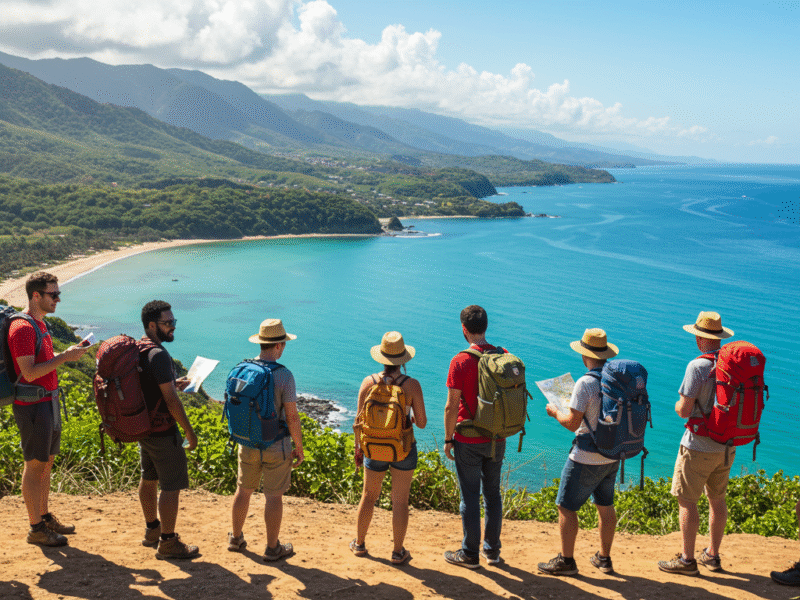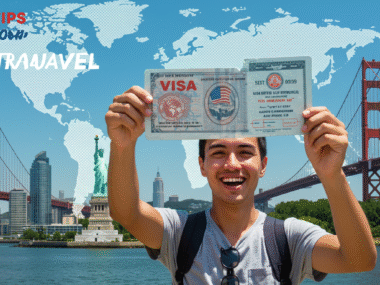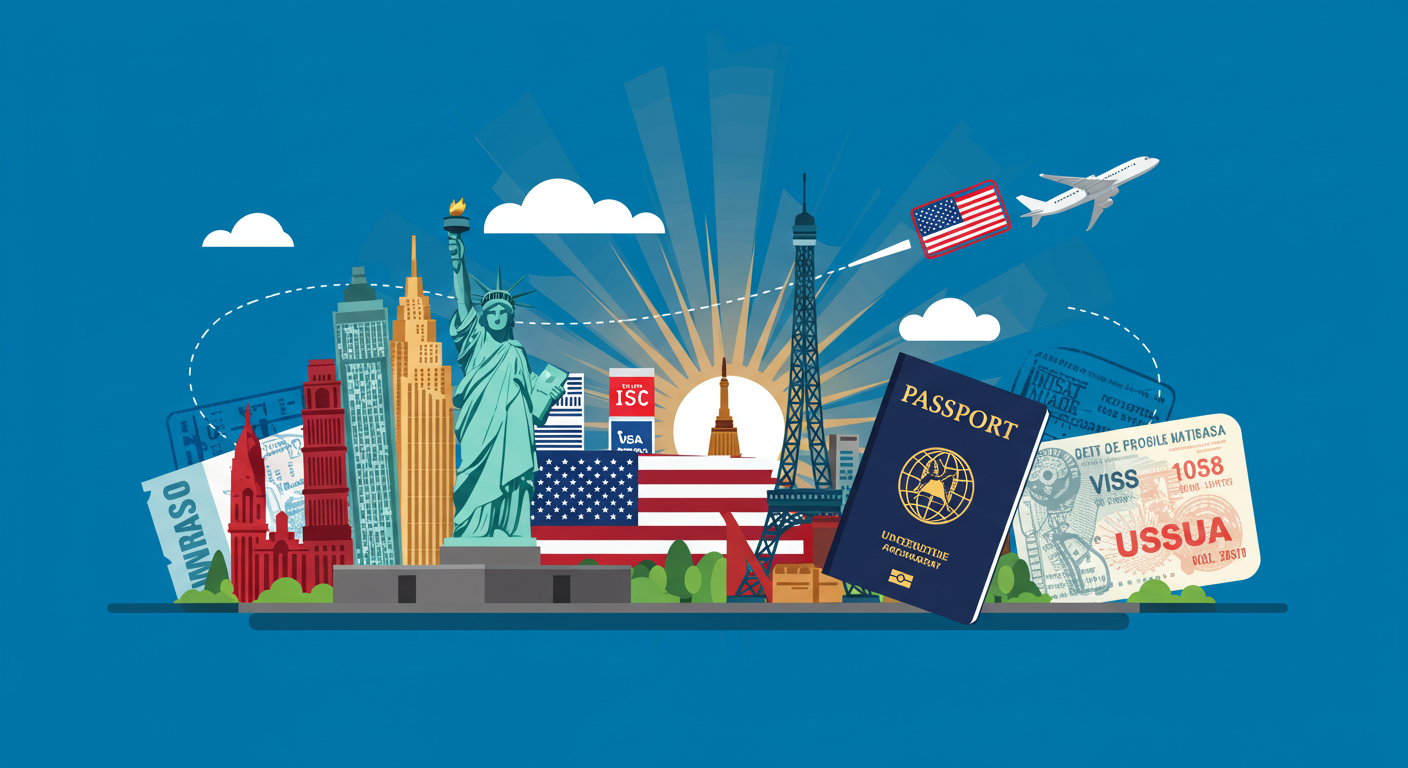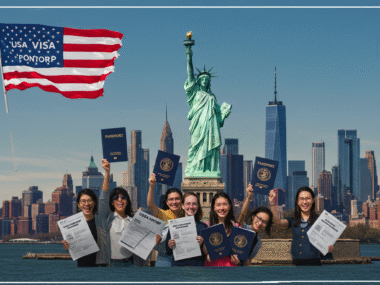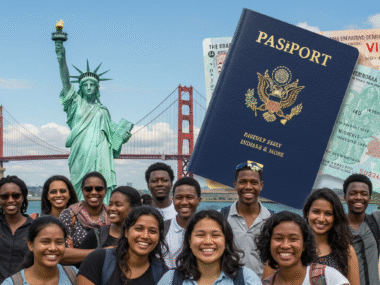Imagine waking up to the sound of ocean waves crashing on a pristine beach, or wandering through ancient cobblestone streets in a charming European town—all without draining your bank account. Planning a perfect vacation on a budget isn’t just possible; it’s an adventure in itself that rewards smart choices and a bit of creativity. Whether you’re a solo traveler, a couple looking for romance, or a family chasing fun, the key is to focus on value over extravagance. In this guide, we’ll walk through every step to help you craft an unforgettable trip that feels luxurious but costs a fraction of what you might expect.
Understanding Your Vacation Goals
Before diving into the details, take a moment to think about what “perfect” means to you. Is it relaxing on a sunny shore, exploring vibrant cities, or hiking through national parks? Defining your goals early helps narrow down options and avoid impulse spending. For instance, if you’re dreaming of budget travel to tropical destinations, prioritize places with low-cost activities like free beaches or street food scenes.
Start by listing your must-haves. Do you need kid-friendly spots for a family vacation? Or are you after romantic getaways with scenic views? Jot down non-negotiables like travel dates, group size, and any special interests such as adventure sports or cultural experiences. This foundation keeps your planning focused and prevents overspending on things that don’t matter.
Next, consider the timing. Off-peak seasons often mean cheaper flights and hotels. Traveling in shoulder months—like spring or fall for Europe—can slash costs by up to 50% while avoiding crowds. Research peak times for your desired spots and aim for alternatives. Tools like Google Flights or travel apps can show price trends, helping you spot the best windows for affordable vacations.
Don’t forget to factor in your personal energy levels. A packed itinerary might sound exciting, but it could lead to burnout and extra expenses on last-minute fixes. Aim for a balanced mix of activities and downtime to make your trip truly rejuvenating.
Read Also:
Setting a Realistic Budget
Money talks, especially on vacation. The first real step is crunching numbers to set a budget that covers everything without surprises. Begin by estimating total costs: transportation, lodging, food, activities, and a buffer for emergencies.
Break it down. For transportation, if flying, aim for under $500 round-trip per person by booking early—ideally 2-3 months ahead for domestic, 4-6 for international. Use fare comparison sites to hunt for travel deals. Driving? Calculate gas, tolls, and potential car rentals. Public transport like buses or trains can be even cheaper for shorter trips.
Lodging is often the biggest chunk. Target $100-150 per night for comfortable stays by opting for hostels, vacation rentals, or budget hotels. Platforms like Airbnb offer entire homes at hotel prices, especially if sharing with a group. Food-wise, plan for $30-50 daily per person by mixing grocery shopping with affordable eateries—think local markets over tourist traps.
Activities add up quick, so budget $20-50 per day. Free options like parks, walking tours, or beaches keep this low. Finally, add 10-20% for miscellany: souvenirs, tips, or unexpected fees. Track everything in a simple spreadsheet or app like Mint to stay accountable.
Remember, flexibility is your friend. If prices spike, pivot to similar but cheaper alternatives. A beach in Mexico might cost less than Hawaii but deliver similar vibes. This mindset turns budget constraints into opportunities for discovery.
Choosing the Right Destination
Picking where to go is half the fun—and the key to keeping costs down. Focus on destinations known for budget travel, where your dollar stretches further. Think Southeast Asia for exotic adventures, Eastern Europe for history on a dime, or domestic spots like national parks in the U.S.
For beach lovers, consider affordable options like Portugal’s Algarve or Thailand’s islands over pricier Caribbean resorts. Cities like Budapest or Prague offer stunning architecture, vibrant nightlife, and cheap eats—often under $50 a day total. If nature calls, head to places like Costa Rica’s rainforests or the American Southwest’s canyons, where entry fees are low and hiking is free.
Research cost of living indexes on sites like Numbeo to compare expenses. A meal in Vietnam might cost $5, versus $20 in New York. Also, check visa requirements and exchange rates—favorable currencies amplify your budget.
Seasonal deals matter too. Winter escapes to sunny spots like Florida can be bargains when northern states are snowy. Or summer road trips through Canada’s Rockies avoid international flight costs.
Involve your travel companions in the decision. Poll for preferences to ensure everyone’s excited, reducing the chance of mid-trip regrets that lead to extra spending. Ultimately, the best destination aligns with your goals and wallet, turning a simple trip into a memorable escape.
Booking Flights on a Budget
Flights can eat up your budget fast, but savvy strategies make them affordable. Start by being flexible with dates. Mid-week flights (Tuesday or Wednesday) are often cheaper than weekends. Use tools like Skyscanner’s “whole month” search to find the lowest fares.
Sign up for alerts from airlines and deal sites like Scott’s Cheap Flights. They notify you of flash sales—I’ve snagged round-trips to Europe for under $400 this way. Consider budget carriers like Southwest or Ryanair, but watch for add-on fees for bags or seats.
Layovers aren’t always bad; they can save hundreds and add a mini-adventure. Just ensure enough time to connect without stress. For long hauls, economy is fine—pack snacks and entertainment to make it comfortable.
If driving or taking trains, compare costs. Amtrak deals or bus passes from Greyhound can be cheaper than flying for regional trips. Apps like Rome2Rio show all options side by side.
Book early, but not too early—prices stabilize around 45-60 days out for most routes. And always check for promo codes or credit card rewards to trim more off the top.
Finding Affordable Accommodations
Where you sleep sets the tone for your trip, and it doesn’t have to be fancy to be fantastic. Skip five-star hotels; instead, explore vacation rentals, hostels, or boutique motels that offer charm at lower prices.
Airbnb and VRBO are goldmines for budget stays. Filter for “superhosts” with great reviews and look for places with kitchens to save on meals. Sharing a larger space with friends or family cuts costs per person dramatically.
Hostels have evolved—many now offer private rooms with en-suites for couples or families, starting at $30-50/night. Sites like Hostelworld let you sort by ratings and amenities.
For a unique twist, try house-sitting via TrustedHousesitters. Care for someone’s pets in exchange for free lodging—I’ve heard stories of folks staying in gorgeous homes worldwide this way.
Camping is another winner for nature trips. National park sites cost $20-30/night and immerse you in scenery. Apps like Hipcamp find private spots too.
Book directly when possible to avoid fees, and use loyalty programs for discounts. Always read reviews for hidden gems that punch above their price.
Planning Transportation at Your Destination
Once you arrive, getting around shouldn’t break the bank. Public transit is often the cheapest—cities like London or Tokyo have efficient subways for a few bucks per ride. Buy multi-day passes for savings.
Renting bikes or scooters via apps like Lime adds fun and fitness while exploring. In walkable areas, lace up your shoes—it’s free and lets you discover hidden spots.
For longer distances, rideshares like Uber are convenient but add up; opt for local buses or shared vans instead. In Europe, trains connect countries affordably with Eurail passes.
If renting a car, choose economy models and fill up at cheap stations. Apps like GasBuddy help find deals. But weigh if you need one—many destinations are better without the hassle of parking.
Plan routes in advance using Google Maps to estimate times and costs. This avoids pricey taxis when you’re tired or lost.
Crafting a Budget-Friendly Itinerary
A great itinerary balances excitement with economy. Start with free or low-cost attractions: museums with donation entry, public parks, or self-guided walking tours via apps like GPSmyCity.
Group activities by location to minimize transport costs. Spend a day in one neighborhood rather than bouncing around.
Incorporate local experiences—street food markets, free festivals, or hiking trails offer authentic fun without tickets. Research “free days” at paid sites; many museums waive fees certain times.
For paid stuff, buy combo tickets or city passes like the New York CityPASS, saving 40% on top attractions.
Leave room for spontaneity—budget a small “fun fund” for unexpected delights like a gelato stop or street performer.
Track your days in a planner app to ensure variety: mix culture, nature, and relaxation.
Eating Well Without Overspending
Food is a highlight of any trip, and you can savor it affordably. Eat like locals: hit markets for fresh produce, picnic in parks, or try food trucks over restaurants.
Cook some meals if your lodging has a kitchen—grocery shopping saves big and lets you experiment with regional ingredients.
Look for happy hours or lunch specials for dine-out deals. Apps like Yelp filter by price and reviews.
In expensive spots, focus on one splurge meal per day, balancing with cheap eats. Water bottles and snacks from home cut incidental costs.
Vegetarian or street food options are often cheaper and delicious. Plus, it’s healthier after travel indulgences.
Packing Smart to Save Money
What you pack affects your wallet. Travel light to avoid baggage fees—stick to carry-on with versatile clothes: mix-and-match outfits in neutral colors.
Pack multi-use items: a sarong as beach cover, towel, or scarf. Reusable water bottle and snacks dodge airport prices.
Check weather apps for accurate forecasts to avoid buying forgotten items onsite.
For toiletries, use travel sizes or buy basics there if cheaper. Don’t forget adapters, meds, and a first-aid kit to prevent emergency buys.
Organize with packing cubes for efficiency, reducing stress that leads to impulse purchases.
Managing Money on the Go
Smart financial habits keep your budget intact. Use credit cards with no foreign transaction fees for rewards and protection—Chase Sapphire or Capital One Venture are popular.
Notify your bank of travel to avoid frozen accounts. Carry some cash for markets, but rely on cards for security.
Apps like Splitwise track group expenses fairly. Set daily spending limits and review at night.
For currency exchange, use ATMs over airports for better rates. Avoid dynamic currency conversion at checkout.
Budget for tips—research norms to avoid over or under-tipping.
Staying Safe and Healthy
Safety first ensures your vacation stays perfect. Research destinations for common scams or health risks via government sites like the U.S. State Department.
Buy travel insurance—basic policies cost $50-100 and cover medical or trip cancellations. Companies like World Nomads offer flexible options.
Pack masks, sanitizer, and meds; know local emergency numbers.
Stay aware: use hotel safes, avoid flashy jewelry, and share itineraries with family.
For health, stay hydrated, eat balanced, and get rest to avoid doctor visits.
Making Memories Without Extra Costs
The best souvenirs are experiences, not stuff. Focus on photos, journals, or free mementos like pressed flowers.
Engage with locals through apps like Couchsurfing for cultural exchanges—often free and enriching.
Volunteer opportunities via Workaway can include stays, cutting costs while giving back.
Capture moments with your phone; no need for fancy gear.
Dealing with Unexpected Expenses
Stuff happens—delayed flights, lost items. Build a 10-15% contingency fund.
Have backups: extra cards, digital copies of documents on your phone.
If issues arise, contact airlines or hotels promptly for refunds or comps.
Stay calm; a positive attitude turns mishaps into stories.
Eco-Friendly Budget Travel
Sustainable choices often save money. Use public transport to reduce carbon; pack reusable items to cut waste.
Choose eco-lodges that might offer deals for green travelers.
Support local businesses for authentic, affordable experiences.
Family Vacations on a Dime
Traveling with kids? Pick destinations with free kid entry, like zoos or beaches.
Pack games and snacks for entertainment. Choose all-inclusive rentals to control costs.
Look for family discounts on transport and attractions.
Solo Travel Tips
Going alone? Hostels foster connections without extra roommate costs.
Safety apps like bSafe add peace of mind. Embrace flexibility for last-minute deals.
Couple’s Romantic Getaways
Focus on intimate spots: picnics at sunsets, free concerts.
Budget hotels with views can feel luxurious.
Adventure Seekers’ Guide
Hiking, biking—gear rentals are cheap. National parks passes save on entries.
Cultural Immersion on Budget
Free walking tours, local festivals immerse without cost.
Language apps help connect deeper.
Luxury on a Shoestring
Upgrade experiences: free hotel perks, picnic with wine.
Post-Vacation Reflections
Review what worked to improve next trips. Share stories to inspire others.
Planning a perfect vacation without spending too much is about smart choices that maximize joy. With these tips, your next adventure awaits—affordable, unforgettable, and tailored to you.
For more travel inspiration, check out Budget Travel or explore deals on Kayak.

